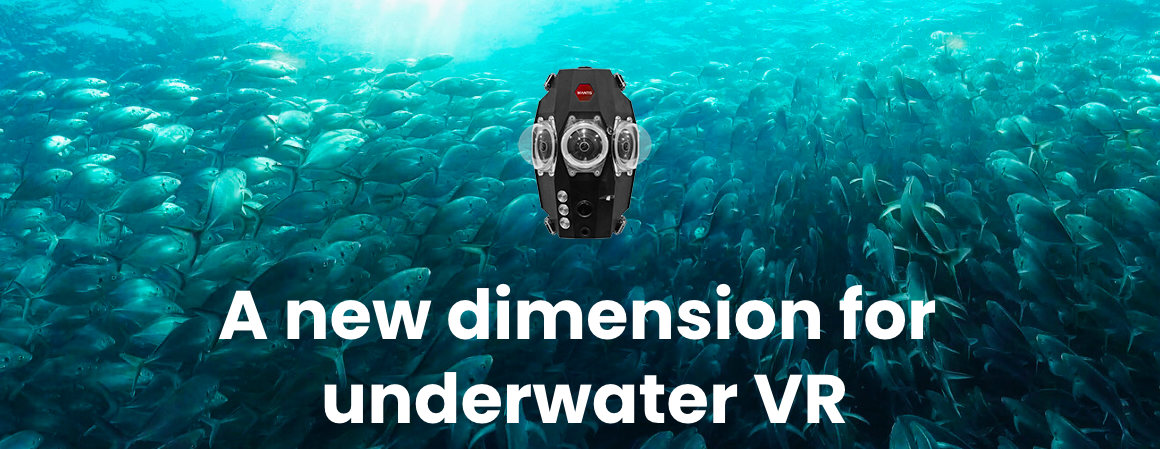The world’s first production 3D/360-VR underwater housing
Mantis Sub opens the realm of 3D production to professional underwater VR producers. To date, underwater VR cameras and housings have been either monoscopic, or the price and size of a new car. The producers of the NZVR Project wanted an alternative that could meet demanding professional production standards, offer 3D stereoscopy, and do it in a compact, affordable, robust housing that was good to 90 metres.
An early decision to leverage the performance, reliability and huge feature set of Insta360’s Pro2 camera set the course.
“It made perfect sense to use the Pro2 camera,” says James Frankham, publisher of New Zealand Geographic and director of the NZVR Project. “We had already been using it for our drone footage, and the interface, control app and workflow offered quick and elegant solutions to an excruciatingly complex technology. It offers 8k 3D production with a log format, and means that users can deploy the same camera in terrestrial and marine environments. In the end, it was a no-brainer.”
The distinctive hexagonal geometry of the housing grew out of the desire for an uninterrupted 360-degree view with clean zenith and nadir. Even the latches are recessed into the anodised aluminium body, resulting in a perfect stitch.
The camera can be switched on and controlled using capacitive-touch buttons on the body, or connected via a waterproof ethernet bulkhead to provide control and livestreaming via the Insta360 app. (On the surface, operators can use wifi/bluetooth for configuration and control as usual.) There are additional ports for a hydrophone, a vacuum valve, and numerous threaded mounts for attaching lighting, tripods and other production rigging.
“This is a camera designed by VR professionals for VR professionals,” says Frankham. “We understand the production community wants robust, capable tools that are good value, reliable and extensible.”
From the stable of Insta360’s professional range, the high degree of control allows producers to finely control the camera’s response to difficult underwater conditions, add artificial lighting and ISO-limit the exposure for clean blacks when shooting in dark environments, at night or in caves.
The Mantis Sub already has a product variation in the Mantis Spray—a weatherproof housing designed to provide 3D-360 coverage aboard foiling AC75 Americas Cup yachts. Rather than submersion it had to resist sheets of spray and the rigours of sailing at speeds approaching 100 km/h while delivering uninterrupted VR footage to the world. A powerful, filtered fan was required to keep the unit cool inside the housing. It’s available in lightweight nylon or anodised aluminium.
“With the acceleration of virtual reality technology, the advent of 3D stereoscopy, and the desire to create visceral experiences in the marine realm, these housings have an important place in the way we cover extreme sports and the underwater world. I can’t wait to see what producers can do with them.”
Development was funded by New Zealand Geographic and Global Dive—a technical diving outfitter also based in New Zealand. Global Dive will be the international distributor and first point of contact for sales and service of the products, says director Andrew Simpson.
“Global Dive is proud to be involved in this product development, and brings considerable sales and service experience to the partnership, from an extensive international network of dive professionals to the meticulous in-house service crew to assemble the products and offer uncompromising after-sales support.”

